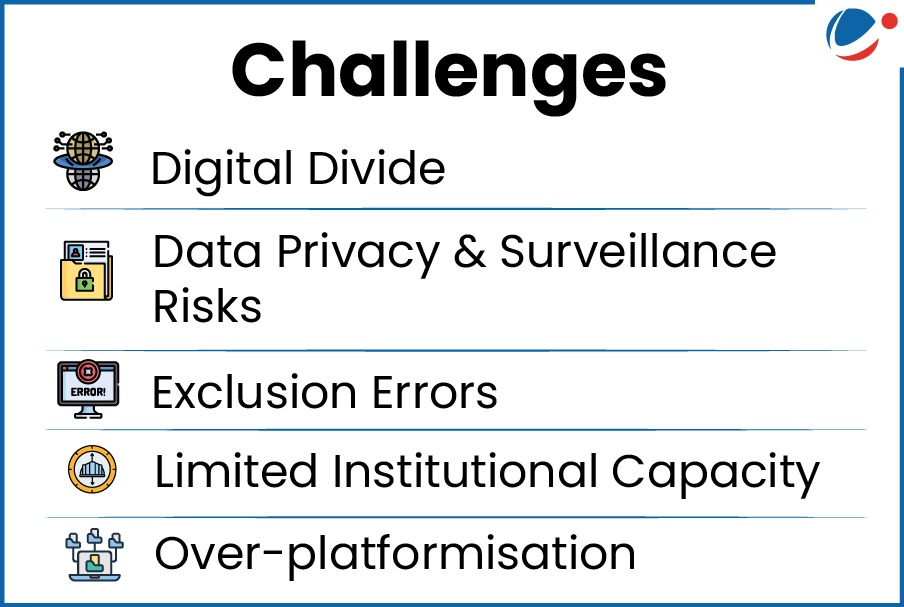E-governance in India has evolved from a backend administrative mechanism into a transformative force, reshaping the way the state interacts with its citizens.
What is E-Governance?
- Definition: E-governance is the use of Information and Communication Technologies (ICTs) to enhance public services, improve government operations, and promote citizen participation.
- Historical Context:
- In its initial phase (1980–2000), technology served as a supporting tool for administrative processes.
- The establishment of the National Informatics Centre (NIC) in 1976 laid the foundation of India’s digitization journey.
- Currently, India ranks 97th the E-Government Development Index 2024.
Transformative Role of E-Governance in India

- Enhancing Citizen Access: Digital platforms like e-Seva & DigiLocker providing citizens with easy access to government services from anywhere.
- Promoting Transparency & Accountability: Initiatives like Bhoomi (digital land records) & Direct Benefit Transfers reducing corruption and leakages in welfare schemes.
- Streamlining Administrative Efficiency: Automation and integration through National e-Governance Plan (NeGP), & Common Service Centres have sped up decision-making & improved service delivery.
- Financial Inclusion: Programs like JAM Trinity (Jan Dhan-Aadhaar-Mobile) and UPI widening financial inclusion.
- Rural Empowerment: Initiatives like Gyandoot and PMGDISHA (digital literacy) bring technology to rural areas, helping citizens participate in governance.
- Enabling Innovation & interoperability: Platforms like India Stack and GeM (Government e-Marketplace) foster innovation, data interoperability, and seamless service delivery across sectors.






